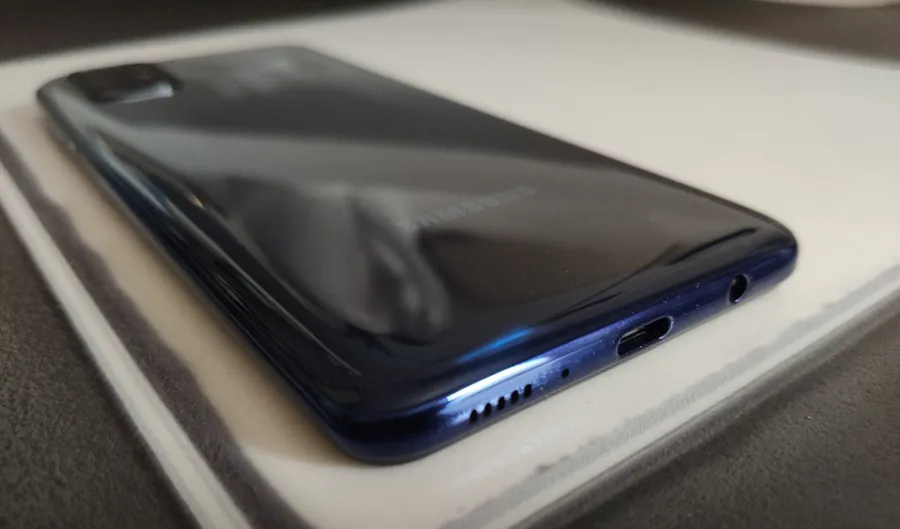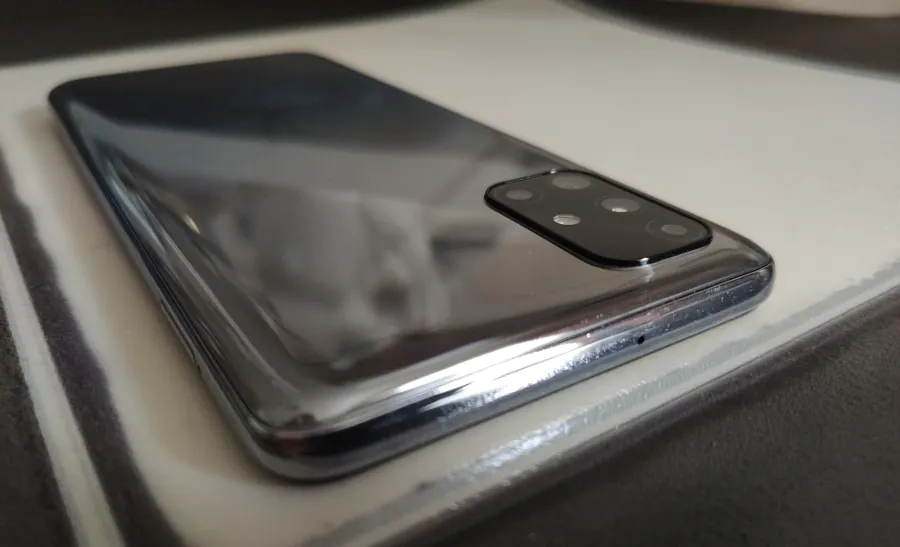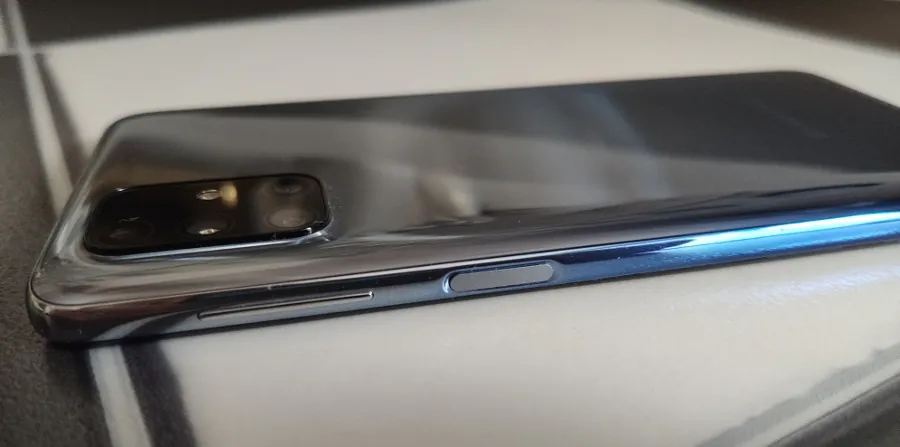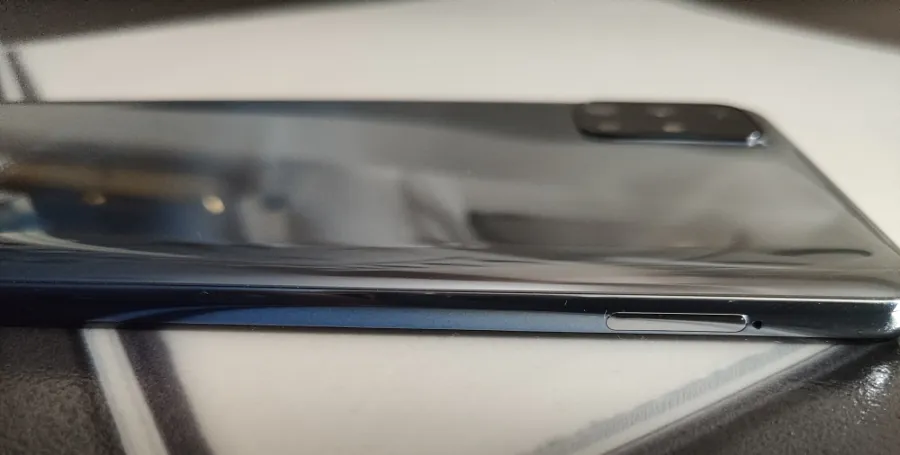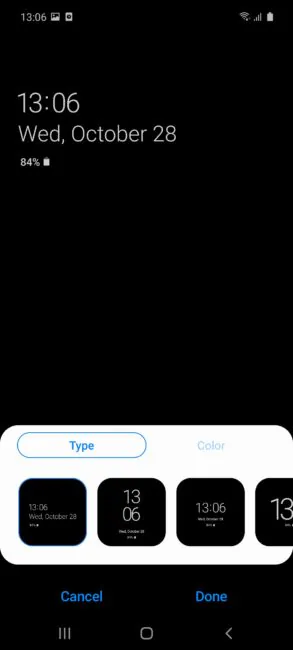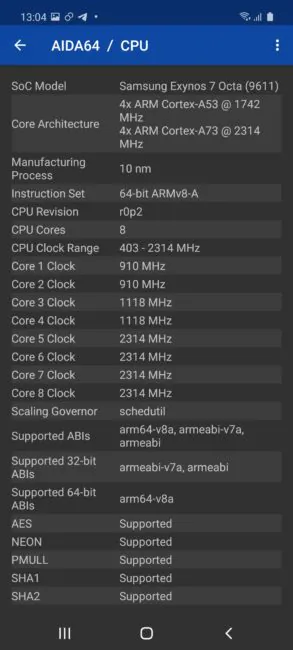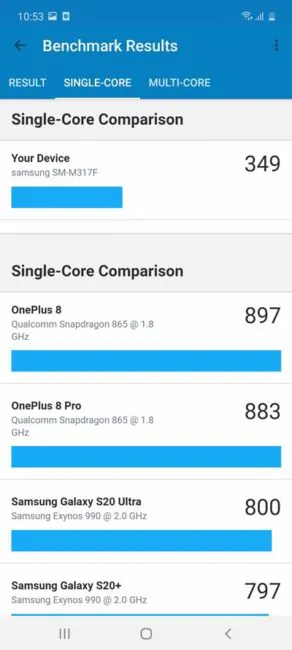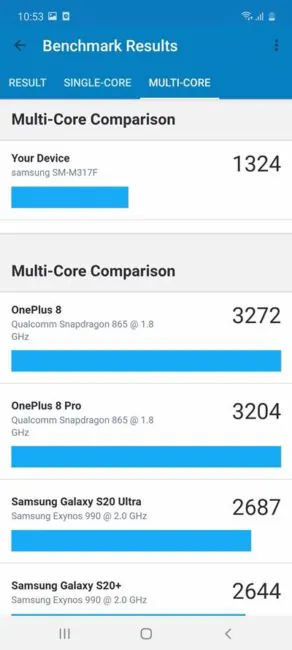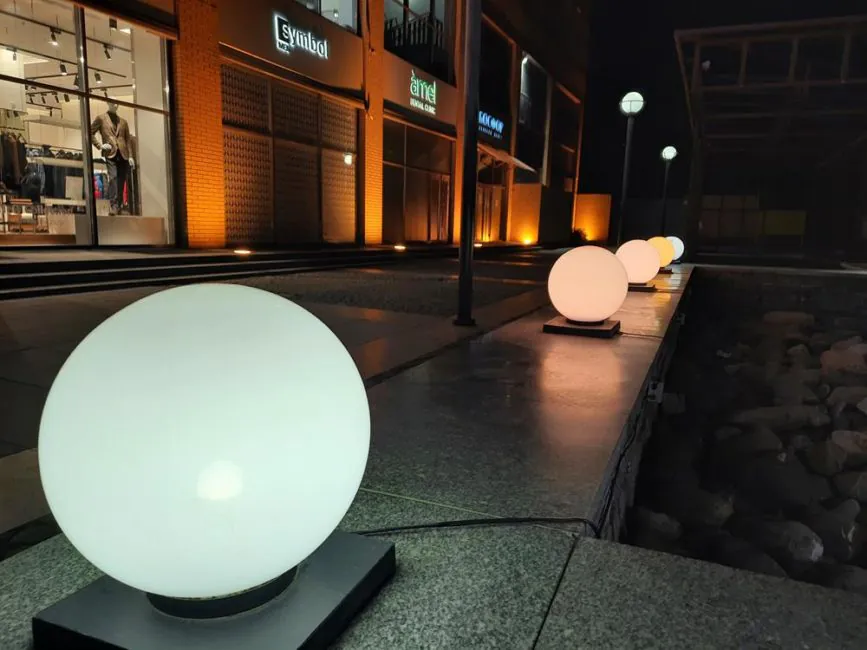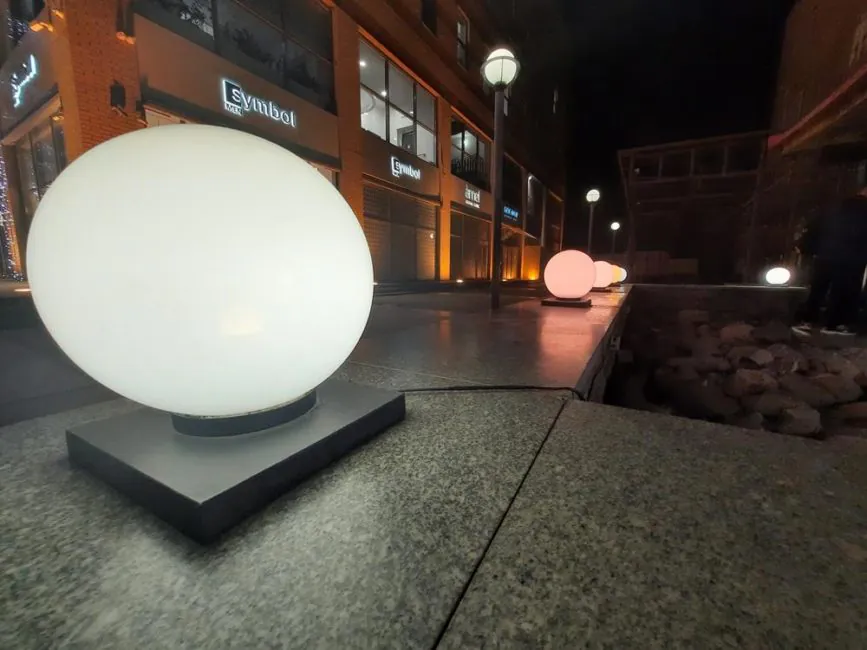© ROOT-NATION.com - Use of content is permitted with a backlink.
Last year, Samsung’s M series was a success, thanks to the brand taking seriously its mid-range devices. A distinctive feature of the M line was its battery life, which is great in the new devices as well. Today our focus is on the Samsung Galaxy M31s. Let’s see what has changed and who might be interested.
Positioning and price
Samsung Galaxy M31s joined the ranks of the South Korean company’s mid-budget smartphones. The price is approximately $255-265. For this money, the smartphone has a lot of competitors among Chinese manufacturers, but A-brands can afford to cater to their own loyal audience and for a mid-level Samsung (with enviable autonomy) the price tag is quite logical.
Where to buy Samsung Galaxy M31:
Samsung Galaxy M31s specs
| Network | Technology | GSM / HSPA / LTE |
|---|
| Launch | Announced | 2020, July 30 |
|---|---|---|
| Status | Available. Released 2020, August 06 |
| Body | Dimensions | 159.3 x 74.4 x 9.3 mm (6.27 x 2.93 x 0.37 in) |
|---|---|---|
| Weight | 203 g (7.16 oz) | |
| SIM | Single SIM (Nano-SIM) or Dual SIM (Nano-SIM, dual stand-by) |
| Display | Type | Super AMOLED |
|---|---|---|
| Size | 6.5 inches, 102.0 cm2 (~86.1% screen-to-body ratio) | |
| Resolution | 1080 x 2400 pixels, 20:9 ratio (~405 ppi density) | |
| Protection | Corning Gorilla Glass 3 |
| Platform | OS | Android 10, One UI 2.0 |
|---|---|---|
| Chipset | Exynos 9611 (10nm) | |
| CPU | Octa-core (4×2.3 GHz Cortex-A73 & 4×1.7 GHz Cortex-A53) | |
| GPU | Mali-G72 MP3 |
| Memory | Card slot | microSDXC (dedicated slot) |
|---|---|---|
| Internal | 128GB 6GB RAM, 128GB 8GB RAM | |
| UFS 2.1 |
| Main Camera | Triple | 64 MP, f/1.8, 26mm (wide), 1/1.72″, 0.8µm, PDAF 12 MP, f/2.2, 123˚ (ultrawide) 5 MP, f/2.4, (macro) 5 MP, f/2.4, (depth) |
|---|---|---|
| Features | LED flash, panorama, HDR | |
| Video | 4K@30fps, 1080p@30fps, gyro-EIS |
| Selfie camera | Single | 32 MP, f/2.2, 26mm (wide), 1/2.8″, 0.8µm |
|---|---|---|
| Features | HDR | |
| Video | 4K@30fps, 1080p@30fps |
| Sound | Loudspeaker | Yes |
|---|---|---|
| 3.5mm jack | Yes |
| Comms | WLAN | Wi-Fi 802.11 a/b/g/n/ac, dual-band, Wi-Fi Direct, hotspot |
|---|---|---|
| Bluetooth | 5.0, A2DP, LE | |
| GPS | Yes, with A-GPS, GLONASS, GALILEO, BDS | |
| NFC | Yes (market/region dependent) | |
| Radio | FM radio, RDS, recording | |
| USB | USB Type-C 2.0, USB On-The-Go |
| Features | Sensors | Fingerprint (side-mounted), accelerometer, gyro, proximity, compass |
|---|
| Battery | Type | Li-Po 6000 mAh, non-removable |
|---|---|---|
| Charging | Fast charging 25W Reverse charging |
Design and materials
Visually, the Galaxy M31s differs little not only from its brothers in the line, but also from many other smartphones of 2020 from Samsung. The device is wrapped in a plastic case with a metal gradient color. M31s has a gray gradient (although for some reason it is called Black), but in the review we have a model in a silver-blue color. The back cover has a mirror-matte finish, and all the edges are painted like metal. Although, of course, it’s plastic, which, moreover, quickly becomes overwhelmed with scratches and loses its original looks.
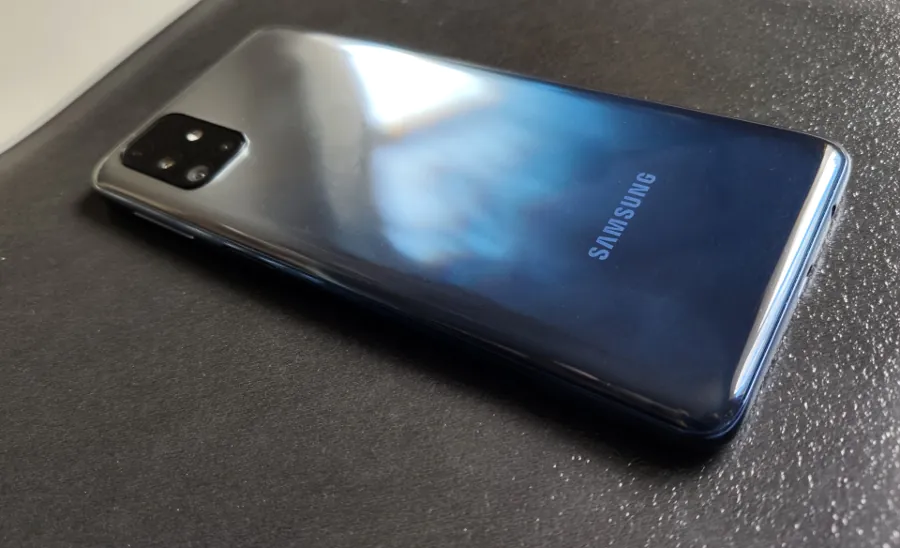
With dimensions of 159.3 × 74.4 × 9.3 mm, the mass of the smartphone is 203 g; although the case is plastic, the battery is still 6000 mAh, which adds weight to the device. On the reverse side in the upper left corner we find a camera unit with a flash. The block rises slightly above the body, which is why the device wobbles when placed on a horizontal surface, but you can hide it with a cover without any problems. Below you can see the brand logo.
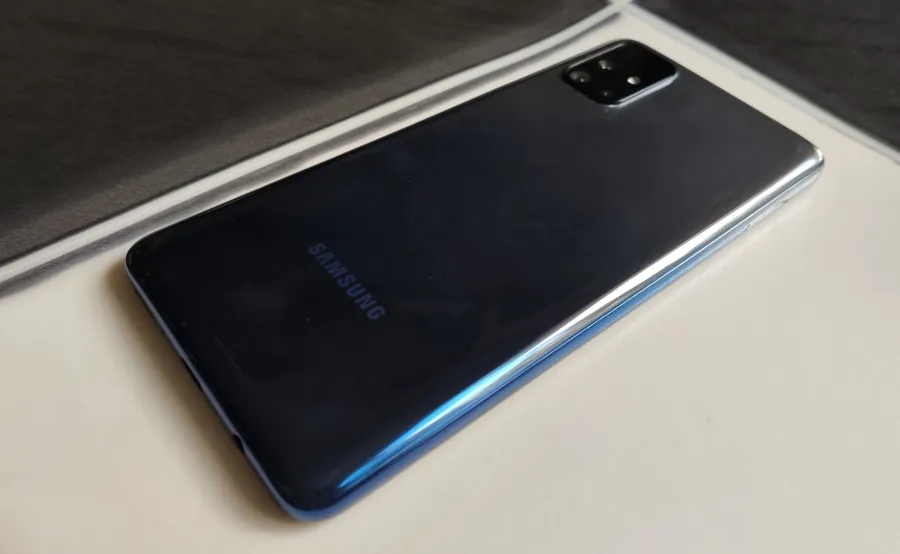
In front we have a display with neat bezels around it. Thankfully, unlike last year’s M-series smartphones, M31s got rid of the teardrop-shaped notch and now the front camera is located in the “hole” in the screen. This, incidentally, made it possible to noticeably refresh the appearance of the device. True, for some reason the camera was highlighted with a silver edging, so at a certain angle the front camera attracts excessive attention. They shouldn’t have done this, in my opinion.

What are your first impressions? Despite the fact that there is nothing outstanding in the design, the smartphone retained its recognizability and even if you remove the logo from the back, you can determine if not the model, then the series or at least the manufacturer. The build quality and materials are fine as usual. And it is also worth noting the tendency to get rid of teardrop notches not only in the flagship segment, but also in the mid-range segment. Infinity-O to the masses!
Location of the main elements
The controls in the M31s are pretty predictable and logical. On the upper edge, there is only a hole for an additional microphone, while on the opposite side you can see connectors for charging (Type-C) and wired 3.5 mm headphones, a main speaker and a microphone.
To the left of the display is a slot for two SIM cards and a memory card (slot for 3 positions), to the right are the volume buttons and a power key with a fingerprint scanner.
On the front of the device, in addition to the display with a selfie camera, there is also a speaker grill. But there was no place for the LED indicator. But with Always-On, its absence is not critical.
Samsung Galaxy M31s display
The Galaxy M31s did not skimp on a 6.5-inch SuperAMOLED screen with a resolution of 1080×2400 (FHD+) and 405 ppi, protected by Gorilla Glass 3. And the display is very good: the picture is contrasty, with black, which is black, and not gray, and the margin of brightness here is at a very decent level.

There is a dark theme, a blue filter, you can adjust the color rendition (contrasty or more natural) and the white balance. Of course, nobody forgot about the Always-On settings: you can set the style and color of the watchface, set the displayed information on the locked screen, etc.
Although OLED displays allow for in-screen fingerprint scanners, this is not about M-series smartphones. Apparently, Samsung leaves this technology for the A-line and, of course, for the flagships. On the other hand, physical scanners are still more accurate and faster than optics, so… no tragedy there.
Unlocking methods
Even if the optical sensor did not work, the good old capacitive fingerprint scanner is in place. In the predecessor M30s, it was located at the back, under the camera unit, in the new generation the scanner was combined with the power button, which is located on the right side. The button is slightly recessed and does not have the smooth texture of the side panel, so you can pinpoint its location by touch.
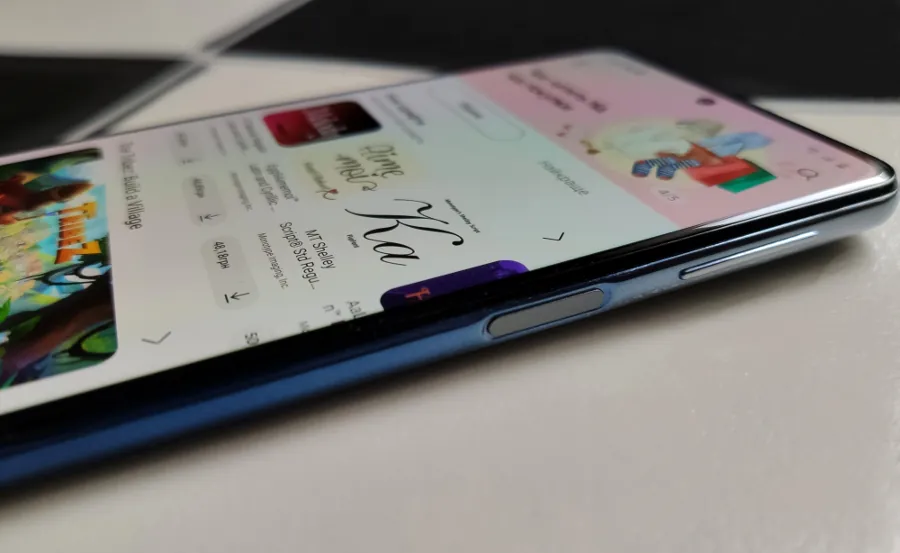
It is difficult to find fault with the scanner. The main thing is to get used to its location and, when unlocking the smartphone, hit the target with your finger. Still, the button is narrow and too high (in my personal opinion). But literally in a couple of days you start using the scanner without hesitation.
As for the face scanner, everything is fine here too. The speed and quality of operation in normal lighting is fine, but in complete darkness some issues arise. There is enough screen backlight for the scanner to work, but the the speed is not great. But this is a global problem, not only Samsung Galaxy M31s suffers from this.
Hardware and performance
The smartphone uses the well-known Exynos 9611 chipset. It was installed in both last year’s M30s and M31 with A51, which the company released this year. The processor is not bad, nor is it amazing by any means. Of the 8 cores, the productive half has a clock frequency of 2.3 GHz, and the energy efficient half has a clock speed of 1.7 GHz. The graphics are supported by the Mali-G72 MP3. By the way, the M30s was also available in a 4/64 GB version, but in 2020 the company decided not to port it. Quite a sensible decision.
Yeah, yeah, it’s the last year’s processor, but so what? It perfectly copes with the usual tasks: calls, email and instant messengers, social networks, listening to music, YouTube, apps, surfing, etc. It can handle games, too: simple casual titles are no problem, heavier games run on medium settings. No freezing was noticed during testing. Still, it’s strangle that in terms of performance the smartphone has not changed at all in a year. And hardware tends to become obsolete and, alas, this happens faster than we would like. All this means that this phone is not as future-proof as we would like.
If we talk about wireless communications, it has everything you need: Wi-Fi (2.4 GHz + 5 GHz), NFC, Bluetooth 5.0 and a stack of supported technologies for determining location – GPS, Glonass, Beidou and Galileo. The phone is based on Android 10 with the Samsung One UI 2.1 shell, which we all know very well. In Samsung Galaxy M31s, the shell functionality is basic, without any flagship features. Even the Edge panel is missing.
Battery life
A big battery is a fundamental feature of the entire line. And in terms of autonomy, these phones are one of the best.
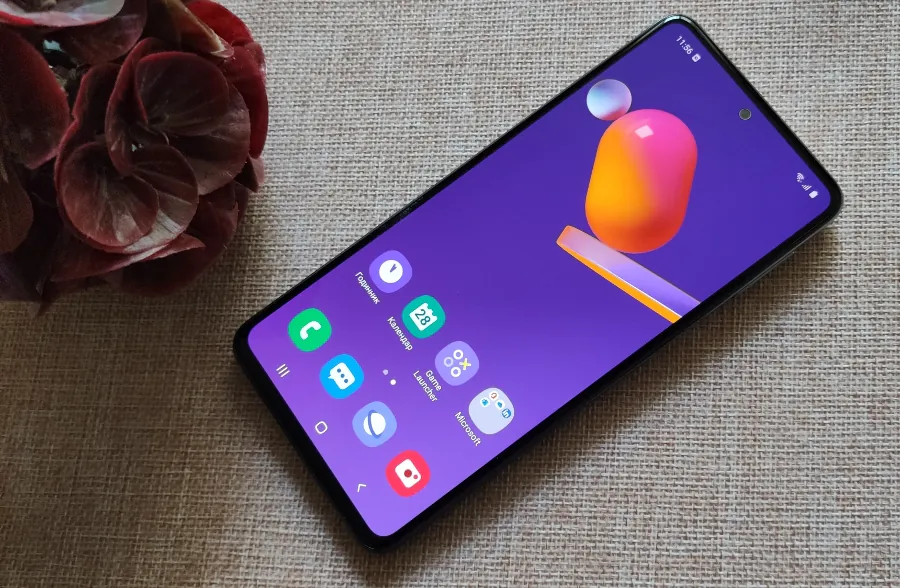
The battery is 6000 mAh. The manufacturer promises up to 22 hours of surfing, up to 51 hours of talking and up to 27 hours of video playback. The reality might be a tad different, but the phone still is a survivor. For example, for 1 hour of watching a video on YouTube at medium brightness and with a dozen applications in the background, the battery loses 5-6%. So maybe it won’t live for 27 hours, but 20 hours are a possibility.
If you minimize multimedia content, then with normal use (with messengers, calls, surfing etc.), the Samsung Galaxy M31s can survive 2 days of moderate loads. Of course, fast charging is a must here. Unlike its predecessor, which supported 15W charging, the M31s supports 25W charging. Sadly, I didn’t have the bundled charger, but using an 18-watt charger, the smartphone was charged by 10% in 10 minutes. That is, from 0 to 100% in a little over an hour and a half. But with a more powerful charger the process should go faster.
Cameras
Compared to the M30s, its successor has one more module, and the characteristics of the cameras have improved. So, the M31s now has 4 sensors: 64 Mp (f/1.8), a 12 Mp wide-angle lens (123°, f/2.2), a macro sensor (5 Mp, f/2.4) and a similar depth sensor (5 Mp, f/2.4). However, both the 64-megapixel M31s sensor and the 48-megapixel M30s module shoot 4K videos.
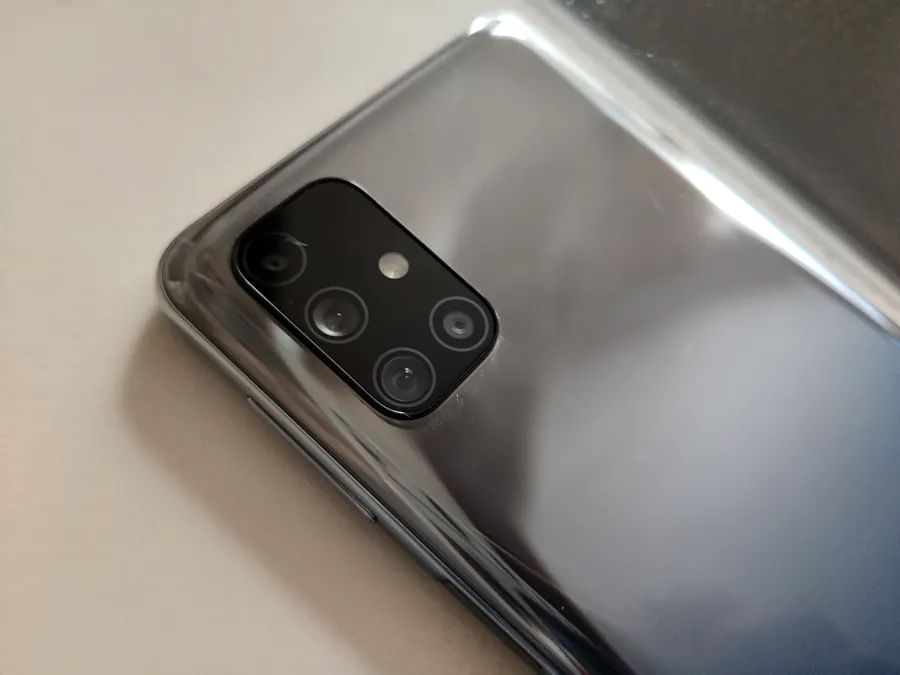
Photo modes are standard, but I would like to note a new interesting mode that has recently appeared in Samsung smartphones. This is the “One frame” mode. Its feature is the parallel shooting of photos and videos in different formats. By making a short video for 10 seconds you get a couple of videos (hyperlapse, slow motion and regular) of different duration and another 5-6 photos also in different modes (on the main sensor, wide angle, 1:1, 4:3, etc.).
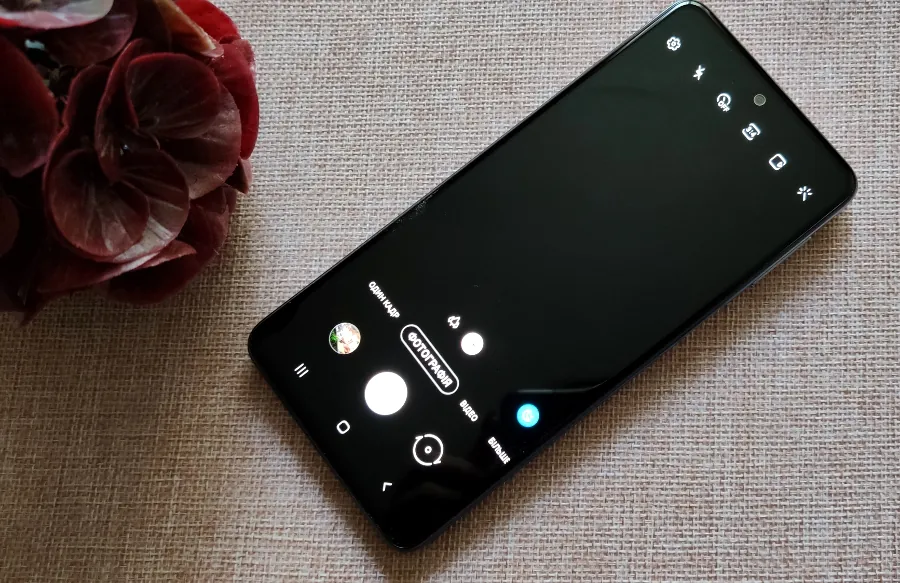
For those who have a pretense on social networks, this feature can be useful. There’s also the Bixby camera and the AR-Zone personalized emoji creation mode.
Now about the quality of photos. Well, the result is quite expected. In daylight, the main and wide-angle sensors allow for quite decent photos. The wide angle lens traditionally overwhelms perspective and proportions, but there’s no getting around it, like in all mid-budget Samsung smartphones. As usual, using the wide-angle sensor at night is useless. But the 64-megapixel camera in most cases copes very, very well. Of course, not without software enhancers like AI (sorry, “Frame Optimization”) and night mode.
СМОТРЕТЬ ОРИГИНАЛЫ ФОТО В ПОЛНОМ РАЗРЕШЕНИИ
Examples of photos from the main camera:
And from wide angle lens:
Macrosensor is a different story. It is very picky about lighting. In good daylight, the photo is nice and sharp, but If the illumination is even slightly lacking, the picture gets grainy and noisy. Artificial light… the less said about it, the better.

The front-facing camera has grown to 32 megapixels (f/2.2); in the M30s it was a 16 megapixel module. With its help, you can also shoot 4K video, and there is also a quick switch between the “Selfie” and “Group Selfie” mode, which increases the angle of view due to the distance of the subject. Filters (including those that can be added by the user) and the built-in “Photoshop” are also in place. Self-portraits are quite good – there is enough detail and clarity. But in low light, the quality, of course, is lacking.
Sound
As for the sound, there is not much to say here. The main speaker is quite loud, but it is mono, so you shouldn’t expect miracles. Movies and videos are heard well and clearly, but for music or games it’s not enough.
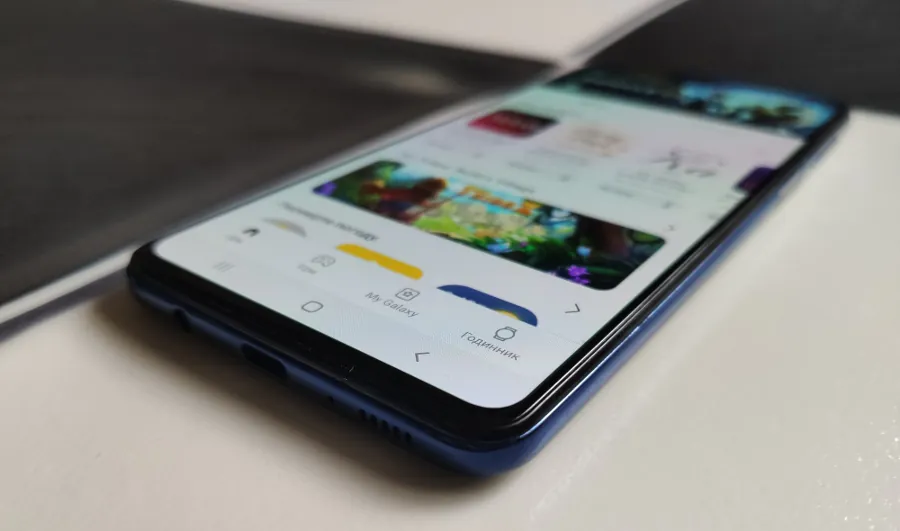
With headphones, things are more interesting. For the last couple of years, Samsung has been installing Dolby Atmos sound enhancer in its smartphones, and this is reflected in the sound quality through the headphones in the most favorable way. However, the original sound through headphones is also not bad, but having tested Dolby Atmos once, I don’t want to go back.
Verdict
Summing up, one cannot but compare the Samsung Galaxy M31s with its predecessor. If last year’s M30s pleasantly surprised the market (a good balance between performance and price, but at the same time impressive battery life), then M31s has not changed much over the year. First of all, this concerns hardware, which is absolutely identical. But at the same time the company abandoned the 4/64 GB model. The display has remained unchanged too, but within the price segment it is difficult to jump higher; AMOLED with FHD+ is good enough.
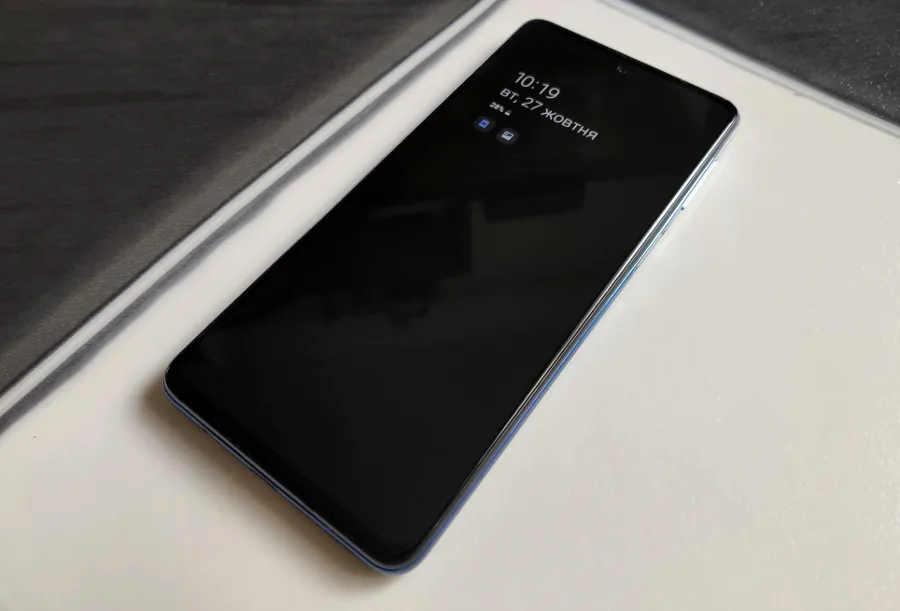
In terms of design, the smartphone is more interesting, you cannot argue with that. By losing the rear location of the fingerprint scanner and the notch, and getting gradient color, the M31s began to look more modern. Plus, there’s another camera and fast charging.
But if we move away from comparisons, the device is still quite competitive. The M31s won’t trouble the Chinese companies very much (they always have a few tricks up their sleeves), but it has two important advantages: great battery life and brand recognition. In its segment, the M31s is far from ideal, but those who are looking for a reliable device with a good battery, a good screen and pretty decent cameras for a good price will be happy.

Where to buy
Subscribe to our accounts:


